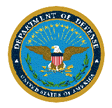
|
|
of Problem
Review
Results
This survey predicts Group C, the newspaper group, will retain more elements of the strategic message as indicated by their survey responses. Many newspaper readers will read a story, comprehend some of it, and re-read the parts of the story they missed or did not understand.
Group A, the television group, is predicted to have the second best survey results. This is believed to occur because the television story will contain some but not all elements of the strategic message and will have the added benefit of conveying verbal and nonverbal messages to the audience. Many times, these visuals will include an interview with a base commander or spokesperson and maybe a video of the criminals leaving the courtroom.
It is predicted that Group B, the radio group, will retain fewer elements of strategic messages. Radio devotes less time per message than the other two mediums selected for this experiment. Many radio newscasts are only four or five minutes in length (such as Associated Press or United Press International) and they must cover a wide variety of topics within that time frame. They rely on repetition and frequency to get the news out to the target audience.